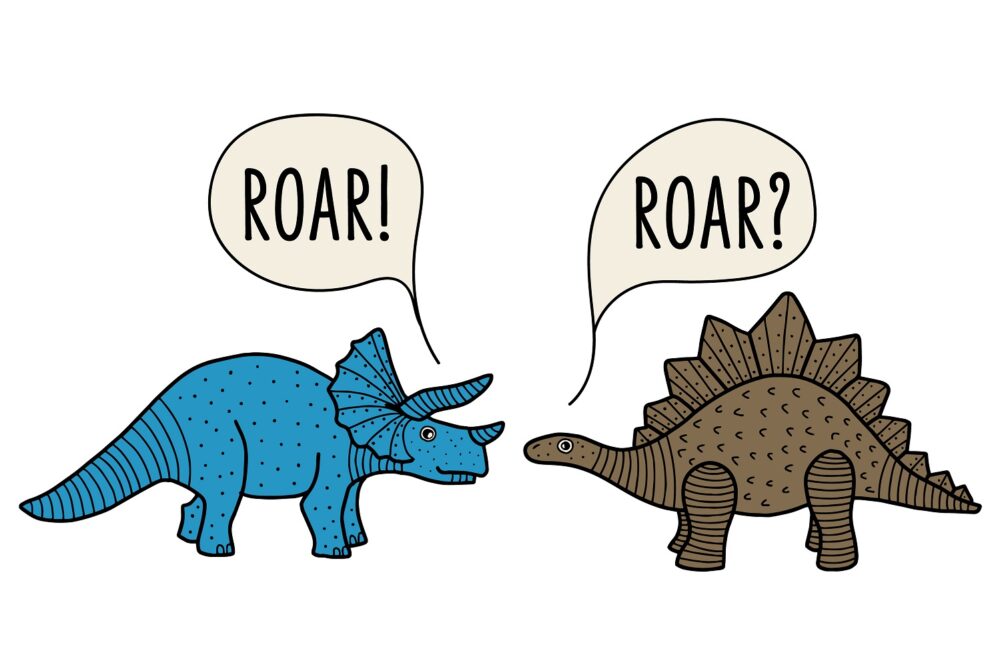
By Blaire Dobiecki, ISCRR Research Communications Officer.
I was once giving a presentation on the relationship between the tooth form and dietary preference of dinosaurs. I had an artist’s depiction of the teeth of a Mamenchisaurus, a herbivorous long-necked dinosaur originally discovered in China. I was explaining to the audience that these teeth were similar to the molars in the back of our mouths, robust and blunt, and therefore good at grinding up plant matter.
After the presentation I was taken aside by a palaeontologist and told that I wasn’t correct in drawing similarities between our teeth, and the teeth of Mamenchisaurus. They had ‘peg-like teeth’, not at all similar to those of human primate molars! I was taken aback. Obviously, I wasn’t trying to say that our teeth were exactly the same. I simply thought the connection would help the pre-schoolers to understand the concept better! My prompt for them to touch their own teeth to feel the blunt surface of their tiny molars wasn’t exactly designed for an adult audience.
Image: Michael Coghlan
Ask any science communicator and they’ll likely tell you that arguing with scientists about what to include in a communication piece is the hardest part of their job. Scientists love detail, but unless the audience consists of other scientists, they won’t need all of that detail — especially not if their median age is 4.
Knowing who your audience is the golden rule of science communication. Understanding what prior knowledge they’ll likely have, and the end goals of your communication will help guide the level of detail you’ll need to include in the piece.
Unless you give your audience a diagnostic test for prior knowledge, you can’t really know what they already know, but you can certainly take an educated guess! It was clear to me that my pre-schooler audience had very little prior knowledge of the intricacies of herbivorous dinosaur teeth, but a general adult lay audience can be much more difficult to gauge.
I was at a National Science Week dinner event once where the topic was on the latest gene editing technology. There was a 20-minute video presentation explaining the basics of DNA. This may have been appropriate for a tween audience, but the room was full of adult science nerds – some of which were professors in the field. A one-minute refresher would have sufficed.
If you assume too little prior knowledge, you can fall into the trap of belittling your audience. Truth is, people like their brains to be challenged, so give them some things to think about — things they’ll want to Google later on.
Why was I informing small children about dinosaur teeth? To give them the joyful experience of learning about palaeontology! Even with simple goals, it’s always good to have some kind of measurable outcome you want to achieve in mind. For me personally, if a child asked me a question relating to something I’d communicated during the session, I knew I’d made an impact.
At ISCRR we strive for all our research to have real world impact. Our research is used to inform government policy and key strategic decisions, so our communication strategy is designed around this core purpose. As such, our research reports include the scientific detail necessary to make informed decisions with real world consequences, while simultaneously ensuring the key points from the research aren’t lost in any jargon or excess information.
You can read more about how we measure research impact in a previous blog article on the topic.
It makes sense to communicate the wonders of palaeontology to pre-schoolers through a carefully pitched presentation. You certainly wouldn’t give them a lengthy report to read! At ISCRR we use a range of communication outputs to suit the given audience and the research impact goals. A typical project we conduct will have several communication outputs staged at different points throughout the project.
As soon as our analysis is done, we present our emerging findings to our partners which detail the main insights from the research. Our partners often need to respond rapidly to our research findings, so these presentations provide the most important information up front, giving them the maximum amount of time to meaningfully respond. There’s also the opportunity for essential two-way communication; where we can directly answer any queries about the research on the spot.
We follow up with more detailed reports that contain the same level of detail as any academic scientific paper, but are careful to define highly specific terminology for our broader audience of public servants and industry professionals. To ensure the main findings are not lost in the detail, we include executive summaries at the beginning of each report. We tailor our communications for highly specific audiences too, which can include infographics, fact sheets and research summaries, ensuring maximal impact.
People like stories, and they remember them better than pure facts. I’m not constantly banging on about Mamenchisaurus teeth for no reason here. I’m hoping the story illustrated a salient point and will help you to better remember it.
Some communicators seem to think that stories should be reserved only when communicating science to broad audiences, but they’re wrong! Everyone loves a story, even dusty old academics and time-poor executives. Just remember to consider who the audience is, keep the story on point and concise. You’re trying to engage your audience, not put them to sleep.
ISCRR is blessed to house a dedicated research communications team – a luxury not often afforded to research groups. If you have a question about how best to communicate your research, get in touch. We’d love to hear from you!
This article was written by Blaire Dobiecki, ISCRR Research Communications Officer. If you’ve found this article useful, please let us know via social media: Twitter or LinkedIn